Abstract
Sylvester, Charles J. (Michigan State University, East Lansing), and Ralph N. Costilow. Nutritional requirements of Bacillus popilliae. J. Bacteriol. 87:114–119. 1964.—Bacillus popilliae grew consistently well in a semisynthetic medium containing a “vitamin-free,” salt-free, acid hydrolysate of casein supplemented with dextrose, dl-tryptophan, and thiamine. However, when the casein hydrolysate was replaced with a complete array of amino acids, no growth occurred. The addition of barbituric acid to this synthetic medium resulted in consistent growth. A number of purines, pyrimidines, and other nitrogen-containing compounds were tested, but none was found that would replace barbituric acid. In synthetic media, B. popilliae was found to require biotin, thiamine, and 11 amino acids for growth. Three additional amino acids were stimulatory. Preliminary studies indicated that the nutritional requirements of B. lentimorbus, another species known to be pathogenic for Japanese beetle (Popillia japonica) larvae, were similar to those for B. popilliae.
Full text
PDF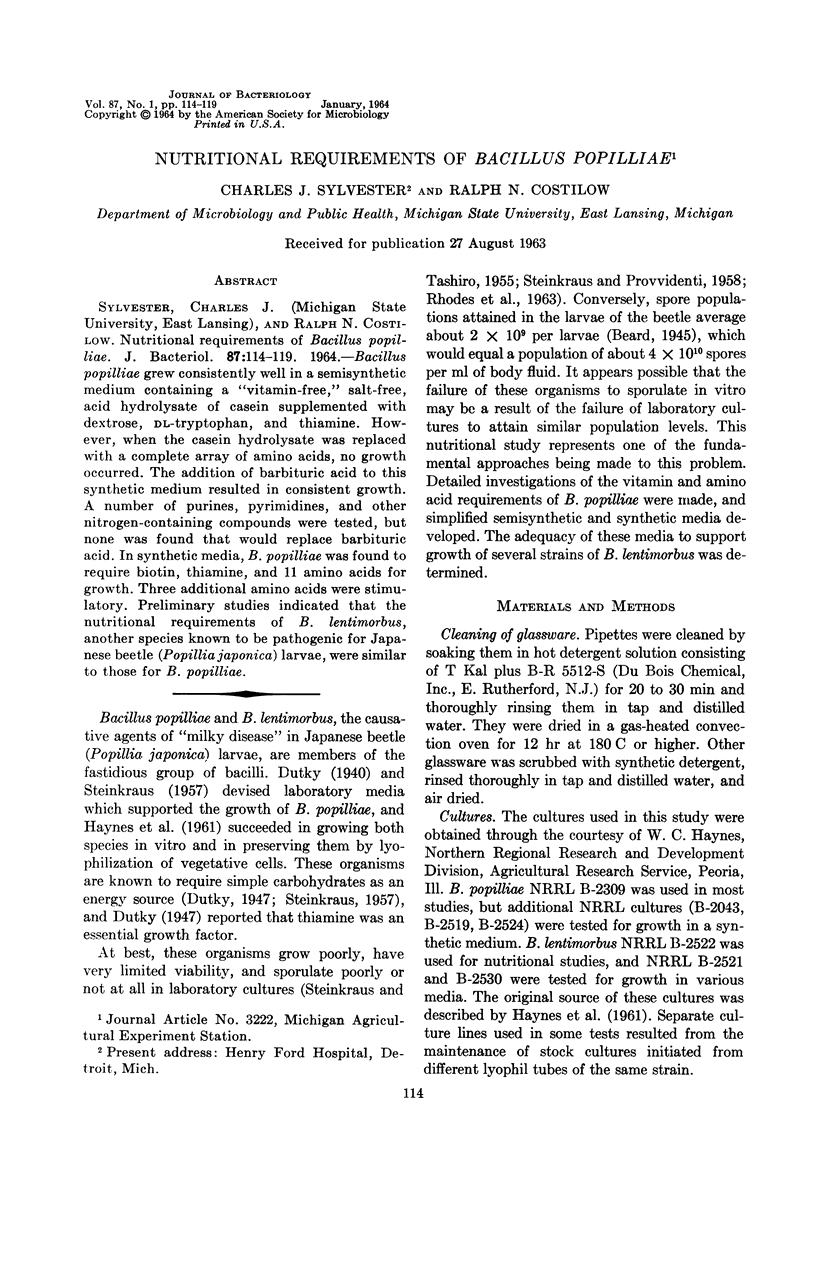
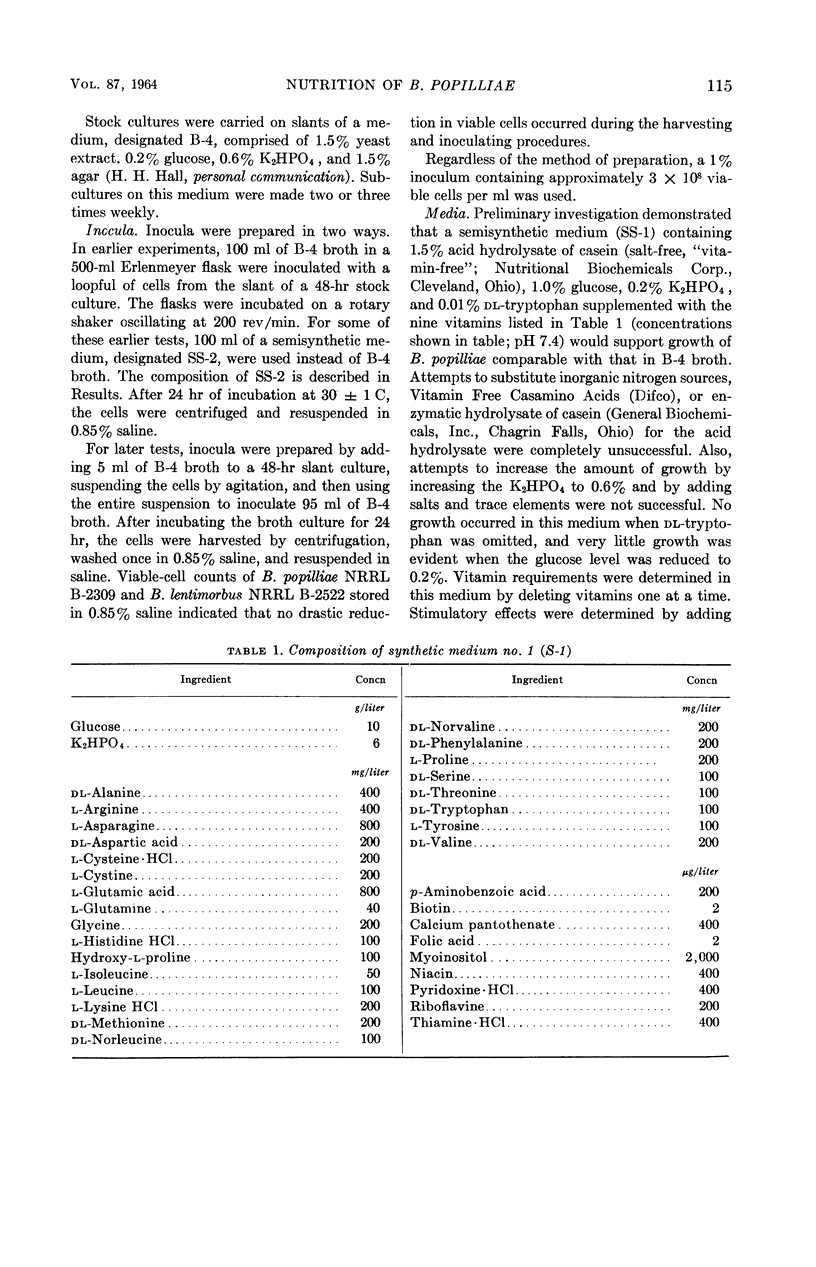
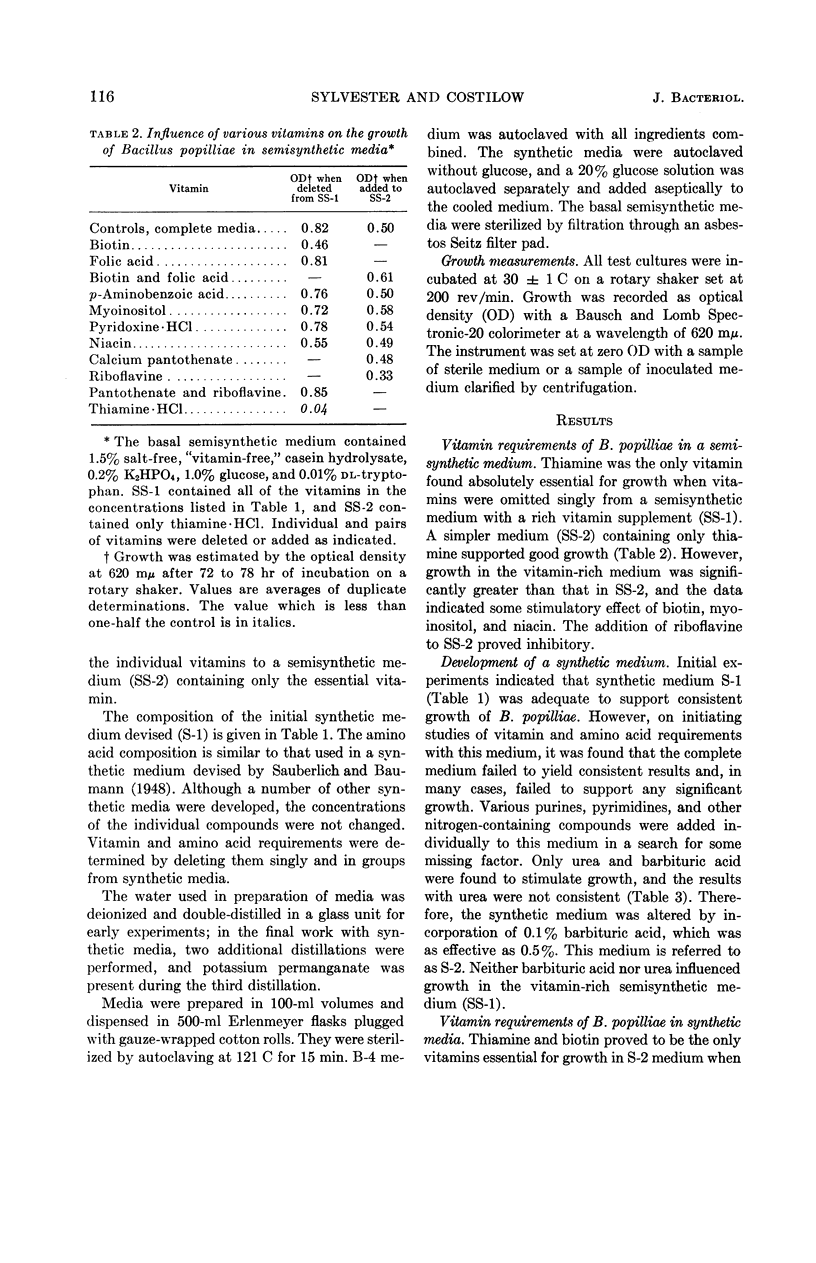
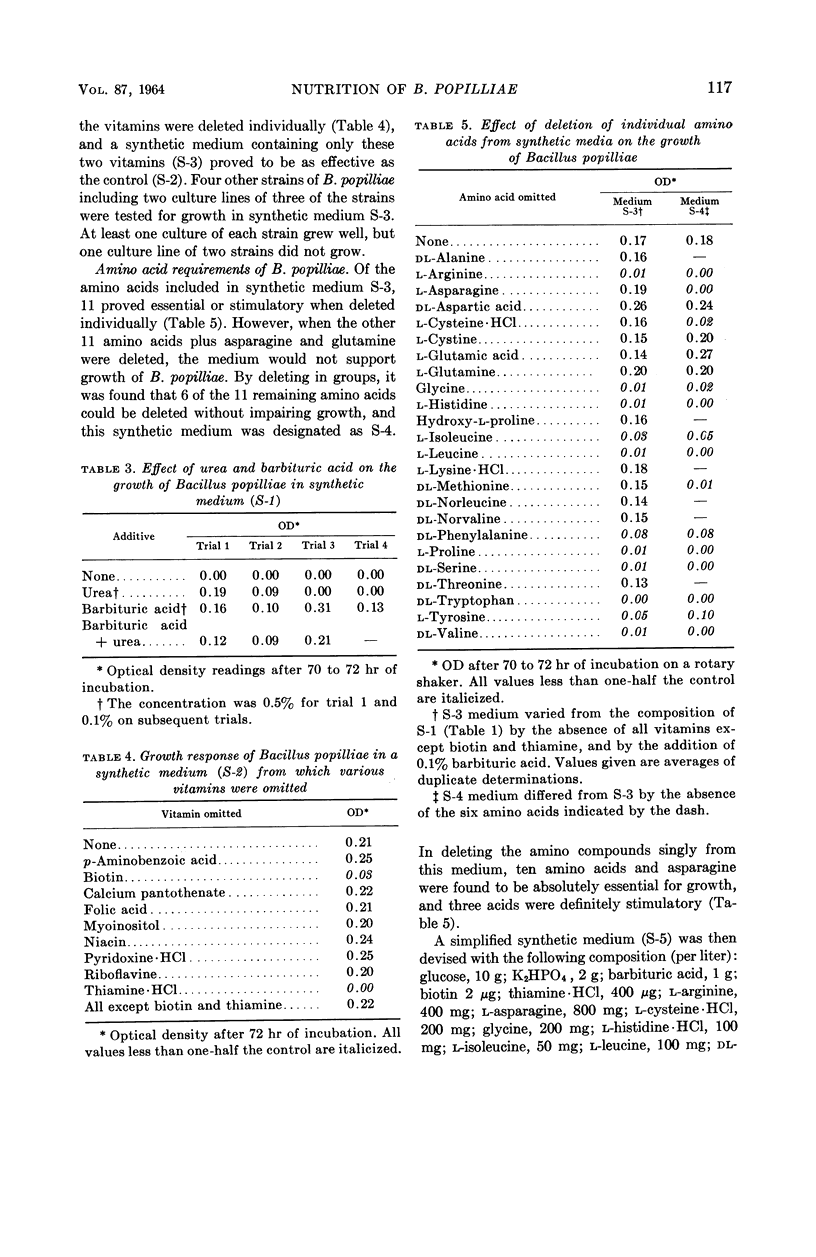

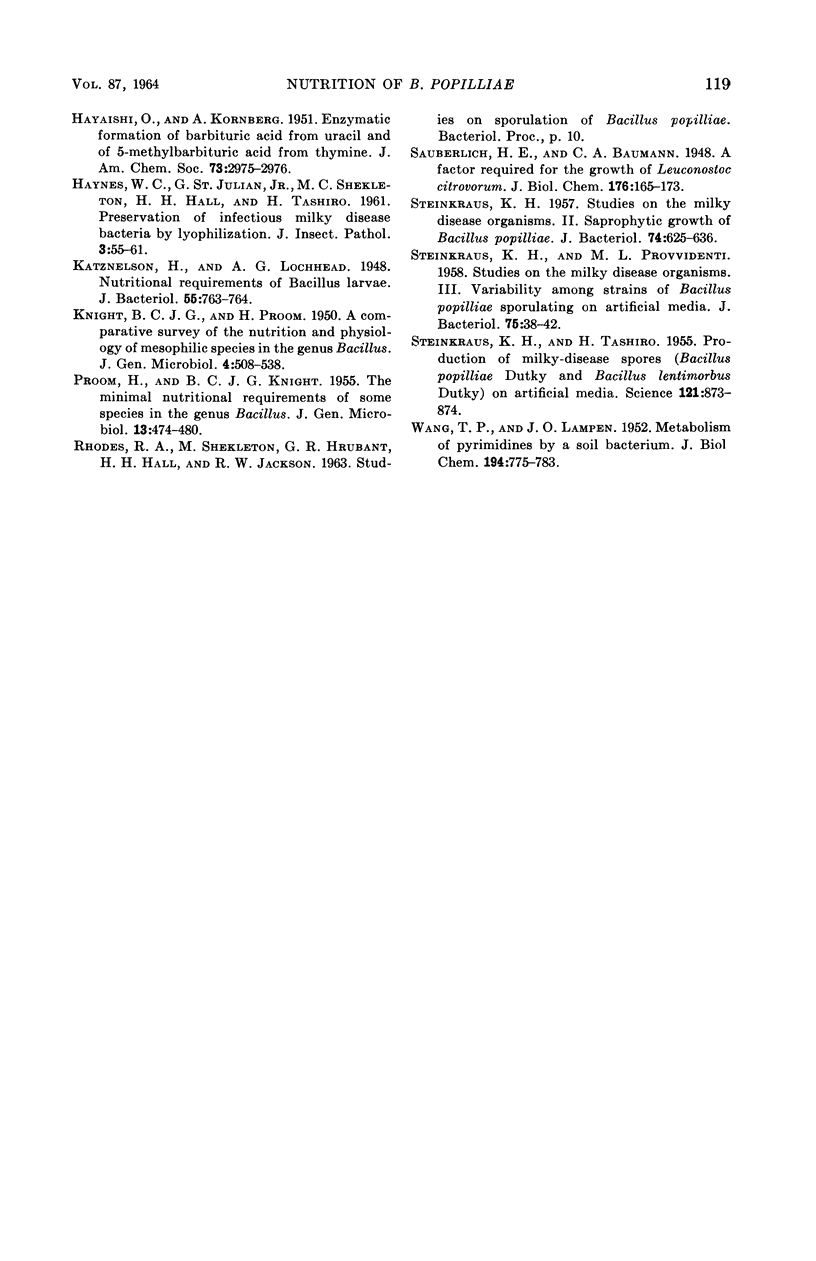
Selected References
These references are in PubMed. This may not be the complete list of references from this article.
- DUTKY S. R. Preliminary observations on the growth requirements of Bacillus popilliae Dutky and Bacillus lentimorbus Dutky. J Bacteriol. 1947 Aug;54(2):267–267. [PMC free article] [PubMed] [Google Scholar]
- KNIGHT B. C. J. G., PROOM H. A comparative survey of the nutrition and physiology of mesophilic species in the genus Bacillus. J Gen Microbiol. 1950 Sep;4(3):508–538. doi: 10.1099/00221287-4-3-508. [DOI] [PubMed] [Google Scholar]
- Katznelson H., Lochhead A. G. Nutritional Requirements of Bacillus larvae. J Bacteriol. 1948 May;55(5):763–764. [PMC free article] [PubMed] [Google Scholar]
- PROOM H., KNIGHT B. C. The minimal nutritional requirements of some species in the genus Bacillus. J Gen Microbiol. 1955 Dec;13(3):474–480. doi: 10.1099/00221287-13-3-474. [DOI] [PubMed] [Google Scholar]
- STEINKRAUS K. H., PROVVIDENTI M. L. Studies on the milky disease organisms. III. Variability among strains of Bacillus popilliaze sporulating on artificial media. J Bacteriol. 1958 Jan;75(1):38–42. doi: 10.1128/jb.75.1.38-42.1958. [DOI] [PMC free article] [PubMed] [Google Scholar]
- STEINKRAUS K. H. Studies on the milky disease organisms. II. Saprophytic growth of Bacillus popilliae. J Bacteriol. 1957 Nov;74(5):625–632. doi: 10.1128/jb.74.5.625-632.1957. [DOI] [PMC free article] [PubMed] [Google Scholar]
- STEINKRAUS K. H., TASHIRO H. Production of milky-disease spores (Bacillus popilliae Dutky and Bacillus lentimorbus Dutky) on artificial media. Science. 1955 Jun 17;121(3155):873–874. doi: 10.1126/science.121.3155.873. [DOI] [PubMed] [Google Scholar]
- WANG T. P., LAMPEN J. O. Metabolism of pyrimidines by a soil bacterium. J Biol Chem. 1952 Feb;194(2):775–783. [PubMed] [Google Scholar]


